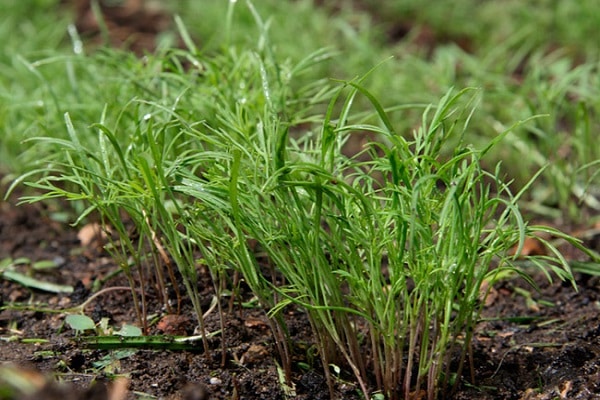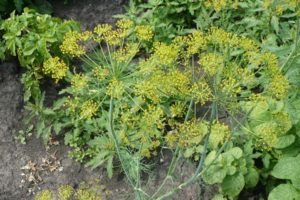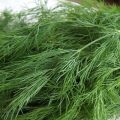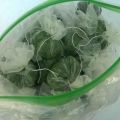The best varieties of dill without umbrellas for greens with names
Dill is cultivated by many gardeners who plant vegetables on their plots. Some of them want to grow dill varieties for greens without umbrellas. However, before you start growing, you need to start choosing the right plant variety. All varieties of dill have their own characteristics, which should be familiarized with before planting.
Are there varieties without umbrellas?
Many gardeners are interested in whether there are varieties of dill that have absolutely no umbrellas. After all, it is because of them that the planted bushes age faster. After the appearance of umbrellas on the bushes, the greens become tough and its leaves begin to gradually turn yellow.
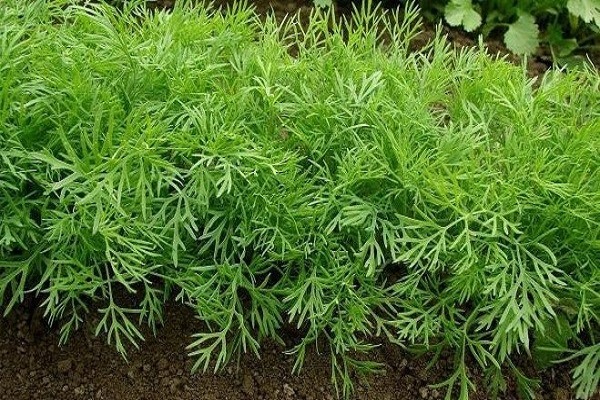
It is impossible to find varieties without umbrellas, since the plant reproduces with the help of seeds, which are formed in this particular part of the bush. Therefore, if the dill bushes did not have umbrellas, they would not be able to reproduce. However, special varieties have been bred in which the umbrella appears rather late. The peculiarity of such varieties of dill is that they age much later than all other varieties.
Dill varieties
Before you start planting a plant, you should familiarize yourself in more detail with its varieties. All varieties of dill are divided into two broad categories:
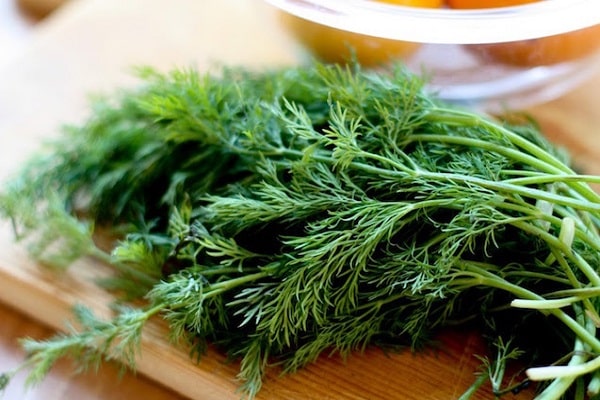
- Shrub. Bush-type plants grow in the form of a small or large spreading bush. Such varieties are distinguished by high yields, subject to the basic rules of care. Also, the peculiarities of bush dill include the duration of the peduncle and the ripening of seeds. In the northern regions of the country, some bushes simply do not have time to fully ripen and therefore gardeners have to remove umbrellas immediately after they appear.
- On the greens. Varieties for greens are distinguished by a strong aroma and a high level of productivity. Their bushes are small in size and are covered with bright leaves of rich green color.
However, there is another classification that distinguishes varieties depending on where they are grown.
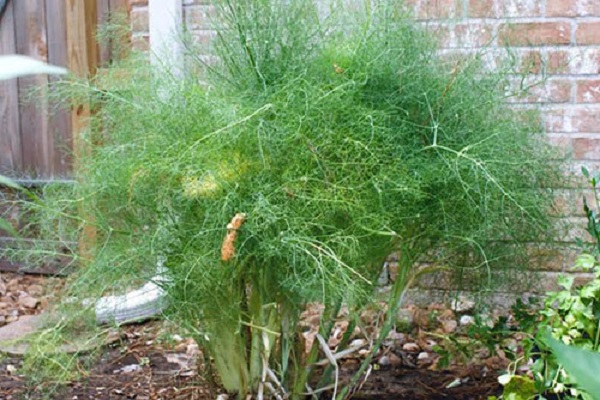
For growing on a windowsill
Dill bushes can be grown not only in greenhouses or vegetable gardens, but also on window sills. At home, the plant feels no worse than in the beds under the sun or in greenhouses.
When growing on a windowsill, it is recommended to use the Gribovsky variety. This type of greenery perfectly tolerates room temperatures and does not need constant maintenance. The only thing Gribovsky needs is fertile soil with a sufficient amount of nutrients.
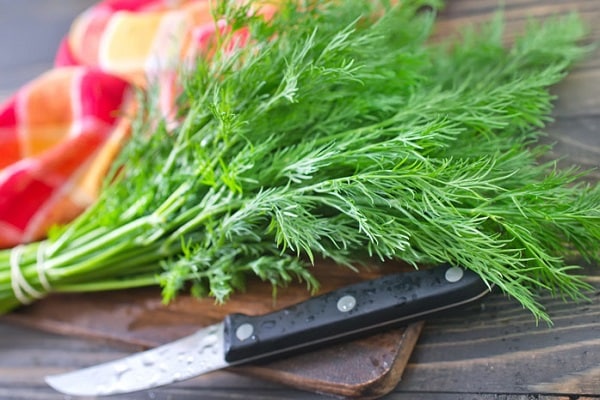
Also, greens grow well on the windowsills, which belongs to the Grenadier variety. It is this plant that housewives most often grow in pots on windowsills. For the Grenadier to have a good yield, you will have to water him 2-3 times a week.
For open ground
Residents of the southern regions of the country often grow dill in the open field. There are several varieties that are best suited for planting outdoors:
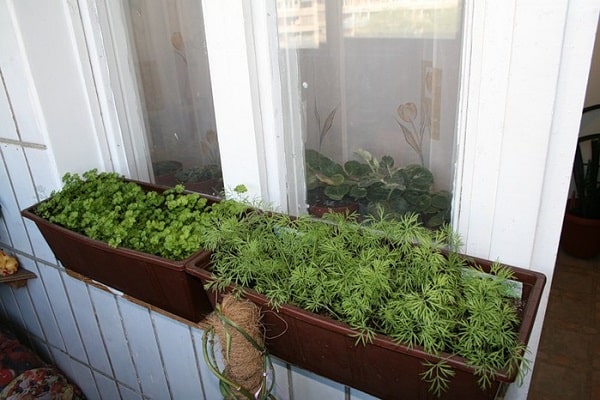
- Further. For planting in the garden, the Dalny dill variety is often chosen, which ripens within a month and a half. The plant grows up to 30 cm tall and divides into 5–6 stems with green leaves. The main feature of this variety is resistance to pests and common diseases.
- Max. Lovers of compact bushes plant Max plants in their gardens. Greens grow up to 15 cm in height and are covered with small diamond-shaped leaves. From one ripe bush, 40-50 grams of greens are collected.
- Kutuzovsky. Among the high-yielding varieties for open ground, Kutuzovskaya greens are distinguished. It is a lush plant with large rounded leaves. This dill has a good aroma and excellent taste.
For greenhouse
For cultivation in greenhouse conditions, varieties are used that cope with the lack of light without problems. These types of greens include:
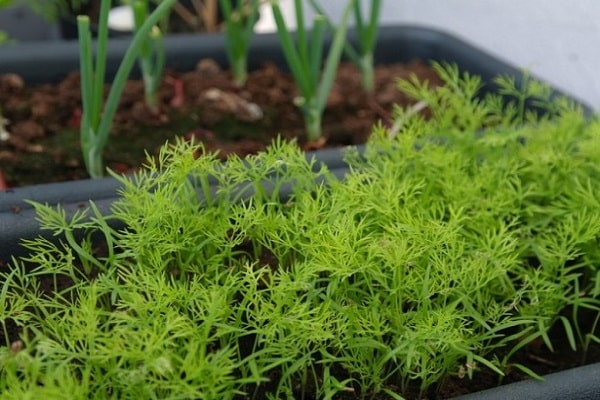
- Umbrella. This variety is recommended to be grown in tall greenhouses, as the stems of mature plants grow up to two and a half meters in height. You can collect ripe greens a month and a half after planting.
- Frost. When grown in a greenhouse, greens grow up to one and a half meters in height. The bush is covered with large dissected leaves with a waxy coating on the surface. The umbrella on the plant is formed quite late and therefore the bushes do not age for a long time.
- Kibray. This variety is referred to as early maturing varieties of greens, since the crop is harvested 20-25 days after planting. Kibray is distinguished by juicy leaves that have a delicate taste.
Early ripe varieties of dill
Many grow early maturing types of dillas they ripen quickly and form umbrellas. Thanks to this, already in the second half of spring it will be possible to collect ripe greens. Early ripe dill includes:

- Umbrella. This variety was bred by breeders for fresh greens in late spring. The leaves of the bushes are collected in small rosettes of bright green color. The umbrella is recommended to grow in high humidity conditions so that the plant grows better. To increase the yield, it is recommended to periodically fertilize it with nitrogen.
- Redoubt. For the preparation of preserves, the aromatic Redoubt variety is often used. Such a plant is classified as one of the best yielding varieties, since at least 50 grams of juicy greens are harvested from each bush.
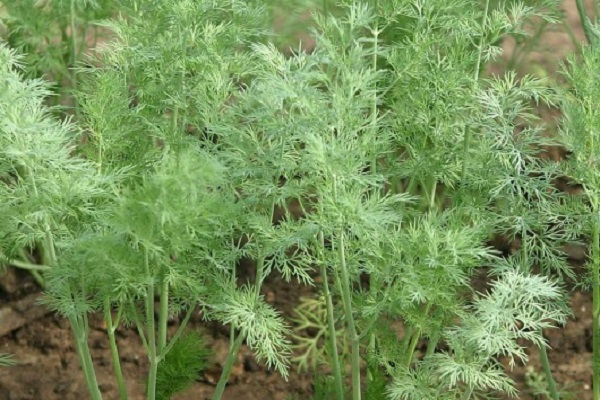
Mid-season
Mid-ripening greens ripen 10-15 days later than early-ripening varieties. However, such bushes are more productive, as they grow more green mass. Most often, gardeners plant the following mid-season types of dill:
- Amazon. The most productive mid-season variety is Amazon greens. Gardeners collect at least 50–65 grams of greens from one adult bush. The harvested crop is used in cooking for the creation of preserves or vegetable salads.
- Richelieu. The plant grows up to 120 cm high and 20-30 cm wide. The bushes are covered with large leaves and lush rosettes. In the first half of summer, the greenery is covered with umbrellas, on which more than 40 rays are formed over time. Richelieu is used in cooking for the preparation of aromatic spices.
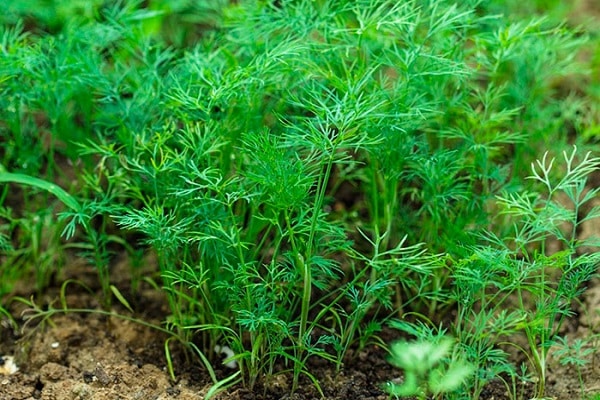
Late-ripening varieties
For winter harvesting, it is better to use late-ripening types of greenery, since it is harvested in the first half of autumn. Among the late-ripening varieties of dill, the following are distinguished:
- Alligator.The bushes of the plant grow up to 30 cm in height and are covered with large fragrant leaves. The alligator does not form an umbrella until autumn, and therefore it is possible to harvest from its bushes several times per season. About 65 grams of fresh herbs can be obtained from each bush in one collection.
- Mischievous. It is a tall plant that grows up to 130 cm in height. Bushes are covered with small diamond-shaped leaves, on the surface of which there is a bluish bloom. The advantages of the Mischief include high yield and unpretentious care.

How to plant?
Before you start planting dill, it is recommended that you familiarize yourself with the features of planting and growing this plant.

Seed preparation
All seed is pre-prepared so that the seeds germinate faster. To do this, all the seeds are placed in a small piece of cloth and spilled with water. The seeds should be in a damp cloth for at least two days, after which they are taken out and dried in the sun.
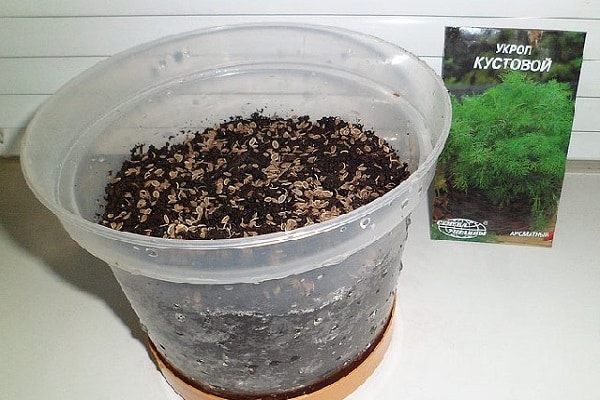
Dill sowing dates
Greenery is planted in the second half of April, when the air temperature will not drop below zero degrees. In the northern regions, due to night frosts, planting is postponed to mid or late May. In greenhouse conditions dill sits down in any season. The main thing is that the temperature in the greenhouse does not fall below 10-12 degrees Celsius.
When planting greenery on the site, holes are made at a distance of 20-30 cm from each other. Then the holes are moistened with warm water and fertilized with organic fertilizers. After preparing the soil, dill seeds are planted in each hole.
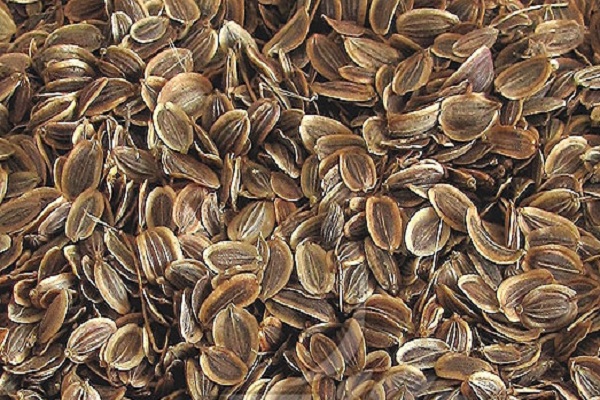
Care
After the first shoots appear, all the seedlings are thoroughly watered with warm water. It is recommended to moisten the soil 2-3 times a week so that the soil does not have time to dry out. After each watering, the soil is loosened with a hoe and cleared of weeds.
When the seedlings grow up to 10-15 cm, they are thinned out. It is recommended to remove the side shoots so that the bushes do not interfere with neighboring plants. After thinning, the distance between the greens should be about 20 cm.
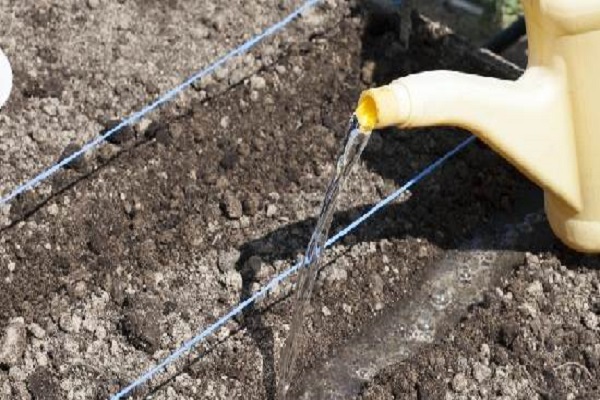
How to harvest and dry a dill crop?
An important step in growing dill is the harvesting of ripe greens. They do this at the end of summer or in the first half of autumn. When harvesting, the bushes are pulled from the ground along with the roots. Then the roots are cut off, and the leaves are dried in the sun on the street or windowsill.
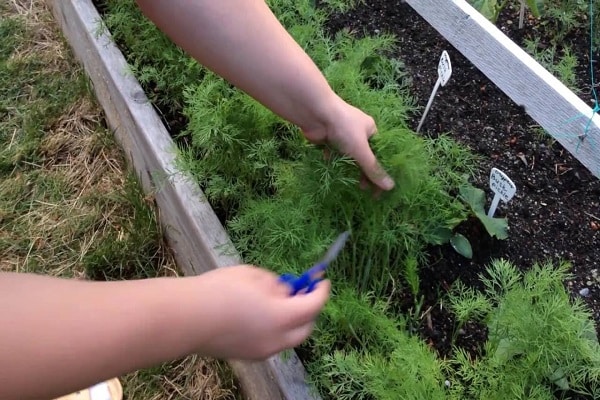
Dill diseases
Vegetable growers do not always manage to get a good harvest of dill, as this plant often suffers from diseases caused by harmful fungi.
Most often, greenery suffers from peronosporosis, which affects the upper part of the bushes. The disease manifests itself at high humidity and an air temperature of about 15-20 degrees.
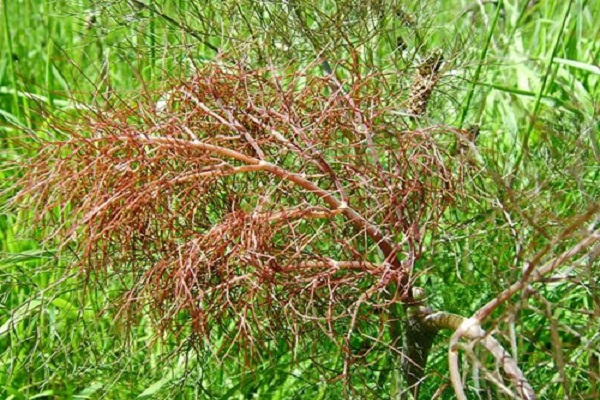
Also, seedlings often suffer from phomosis, which leads to the death of the bushes. With such a disease, all the bushes gradually turn black and wither. When the first signs of phomosis appear, it is better to get rid of the infected greenery immediately.
Another common disease is cercosporosis. With this disease, all infected plants are covered with brown spots. It is impossible to cure the disease, and therefore the greens with cercosporia are dug up and burned.
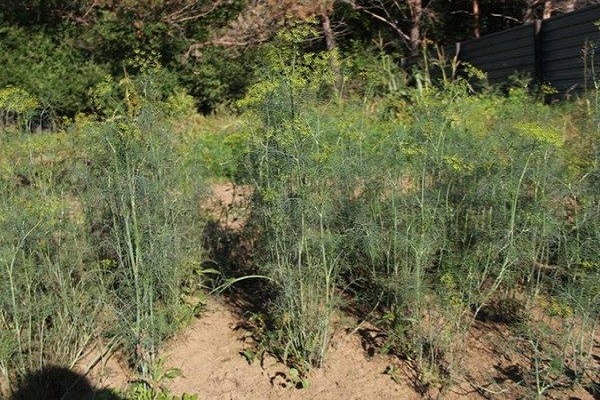
Conclusion
Dill is considered a common greenery that many gardeners grow on their plots. Before you start planting such a plant, you need to familiarize yourself with its varieties and the characteristics of their cultivation.
